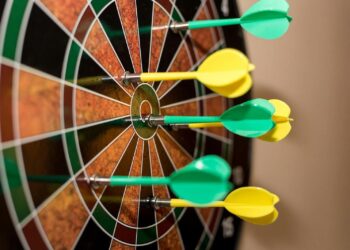NBA betting systems built on solid data analysis can hit 62.34% accuracy in predicting game outcomes. While most casual bettors barely break even, those who dig into the numbers are finding consistent success.
Imagine this, back in 2009, just 10 data analysts worked for NBA teams. That number jumped to 132 by 2023, reflecting how valuable these insights have become. Research shows teams that invest more in analytics tend to win more games.
Even better, bettors who move quickly on player availability information before sportsbooks adjust their lines have seen returns hit 25%.
Understanding the Role of NBA Analytics in Betting
Advanced metrics separate winning bettors from those who chase hunches. Points per game tell you nothing about efficiency. Offensive rating per 100 possessions does. Successful NBA betting systems start with the right data foundation. Those who master advanced metrics consistently outperform casual bettors on betting sites on TheSportsGeek with systematic approaches. They prove their worth over time through sustained profitability.
Offensive and defensive ratings also cut through the noise of basic statistics. These efficiency metrics reveal which teams actually dominate when possessions are equal. Pace matters more than most bettors realize. Fast-paced teams create additional scoring chances, directly impacting over/under totals.

Meanwhile, effective field goal percentage (eFG%) exposes teams that maximize their shooting efficiency despite fewer attempts. When betting on player props or assessing injury impact, these numbers become crucial. Home-court advantage still drives NBA outcomes, with teams performing significantly better in familiar environments. Smart bettors factor home and away splits into their spread analysis.
The more relevant historical context you possess about specific team matchups, the better positioned you are to identify profitable opportunities.
Designing a Profitable NBA Betting Framework
Building a successful NBA betting model requires more than just good intentions. It involves a data-driven approach, which becomes the backbone of everything that follows.
Smart variable selection separates winning models from losing ones. Offensive rating, defensive rating, effective field goal percentage, offensive rebounding rate, turnover rate, and free throw rate form the core metrics.
Bankroll management also keeps you in the game long-term. Set aside a fixed amount exclusively for betting, then limit individual wagers to 1 or 2% of your total bankroll. A $1,000 bankroll means $10-$20 bets, not the $100 gambles that sink most bettors.
Diversification across different wager types helps maintain sustainability. Skip the parlays and spread risk intelligently. Luckily, the “Vegas miss analysis” also reveals where sportsbooks’ predictions fall short of actual outcomes, creating opportunities for sharp bettors.
Testing and refinement never stop. So, your framework should evolve beyond basic statistics into a system that identifies profitable spots throughout the entire season.
Developing and Validating Your NBA Betting Model
Building betting models taught us something most amateur bettors miss completely: model calibration beats raw accuracy every single time. Data collection starts with Basketball Reference, which provides the cleanest NBA game information. Moreover, strip out overtime games and fix home/away errors that can throw off entire analyses.
Interestingly, principal component analysis helps you narrow down the most impactful features. This cuts through statistical noise while keeping predictive power intact. Two model types handle different betting scenarios. Classification models, including Naive Bayes, Decision Trees, and Random Forest for straight win/loss predictions and multiple linear regression for scoring forecasts and spread work.

The good news is that properly calibrated models generate higher returns on investment than their accuracy-focused counterparts. Also, detailed tracking can save your system in various ways. For example, it can discover hidden biases, like if your model favors underdogs because of a coding mistake that regresses variables twice. Without meticulous record-keeping, that error can keep bleeding money.
Always remember that poor calibration and validation can make even mathematically sound strategies backfire.
Optimizing Betting Strategy for Long-Term Success
Professional bettors who stick around understand one simple truth: a good model gets you in the game, but disciplined execution keeps you profitable. The pros hit higher win rates through systematic approaches, while weekend warriors chase big payouts and usually end up broke.
Before anything else, serious bettors search and join reputable gambling platforms or sportsbooks. Most experts examine the operating license, customer reviews, security system, and offers before considering any platform. This approach enables them to discover secure sportsbooks with SSL encryption and the best odds for an excellent betting experience.
In addition, NBA injury reports drop at 5:30 p.m. on the day before the game. A final report is also released 15 to 30 minutes before the tip-off, often moving lines dramatically. Smart bettors wait for injury clarity before pulling the trigger. In fact, line shopping remains the most overlooked edge in sports betting.
Furthermore, stick to data-driven decisions when emotions run high. This is because your NBA betting results can go from random to profitable, with data showing the way.









